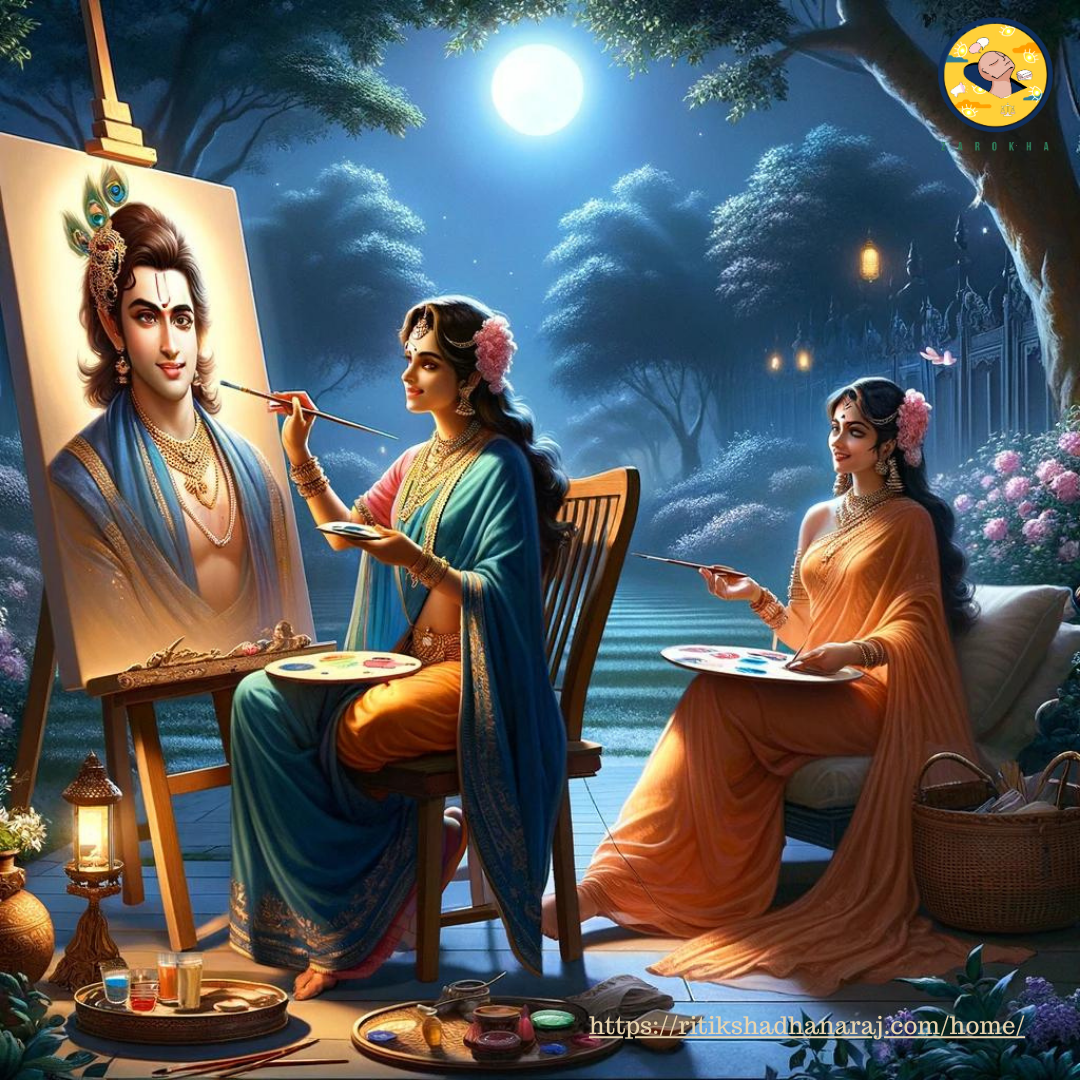Within the mystical pages of the Srimad Bhagavatam, where ancient tales weave the fabric of history, unfolds a story of love, bravery, and divine intervention. Banasura, the powerful Asura king, ruled the kingdom of Sonitapura with arrogance and pride. He was the great-grandson of Prahlada, the child devotee most dear to Lord Krishna. Prahlada, known for his unwavering devotion to Vishnu, was the son of Hiranyakashipu, the demon king who met his end at the hands of Narasimha, an avatar of Vishnu. Banasura inherited the fierce pride of his lineage but lacked their spiritual wisdom. Through relentless penance, Banasura secured a boon from Lord Shiva, ensuring the deity himself would guard his city. However, this tale is not about Banasura’s conquests but about the heart of his daughter, Usha.

Usha, the beautiful daughter of Banasura, was blessed with an ethereal charm. One night, she dreamt of a handsome young man, and it was love at first sight. They spent blissful hours together, but as dawn approached, Usha woke to find it was all just a dream. The longing in her heart grew, and she confided in her friend Chitralekha, who possessed mystical powers.
Chitralekha, an artist of extraordinary skill, painted the young man Usha described. To their amazement, the man in the painting was Aniruddha, the grandson of Lord Krishna. Aniruddha, son of Pradyumna and grandson of Krishna, was a brave and noble warrior. Using her mystical abilities, Chitralekha brought Aniruddha to Usha’s side while he was still asleep.
When Aniruddha awoke, his eyes met Usha’s, and love blossomed instantly. Their happiness, however, was short-lived. Banasura, upon discovering Aniruddha in his fortress, was enraged. He bound Aniruddha with serpents and imprisoned him. Determined to rescue his grandson, Lord Krishna, along with the Yadavas, marched to Sonitapura.
A fierce battle ensued between the Asuras and the Yadavas. Despite Banasura’s thousand arms and the protection of Lord Shiva, his forces crumbled under the might of the Yadavas. Seeking refuge, Banasura turned to Lord Shiva. The battle escalated, leading to the famous but catastrophic Hari-Hara war, a clash of titans where rivers of blood flowed, giving the city its name, Tezpur, or ‘City of Blood.’
The final confrontation saw Lord Krishna wielding his Sudarsana Chakra against Lord Shiva’s Trishula. To prevent the impending destruction, Lord Brahma intervened, bringing a halt to the devastation. In the aftermath, Banasura realized the futility of his arrogance. He accepted Aniruddha as his daughter’s suitor.
Their love story is beautifully captured in various literary and artistic works. Notably, the epic poem “Usha-Aniruddha” by the Bengali poet Michael Madhusudan Dutt, who masterfully narrates their tale with poetic elegance. This story is also depicted in traditional Pattachitra paintings of Odisha, which vividly illustrate the divine love and the epic battle between the Yadavas and the Asuras.
Usha and Aniruddha’s union was celebrated with grandeur, marking the end of a divine struggle and the beginning of a love blessed by the gods. Their story, a testament to the power of love, sacrifice, and divine will, continues to echo through the ages, reminding us of the enduring strength of the heart’s deepest desires.

